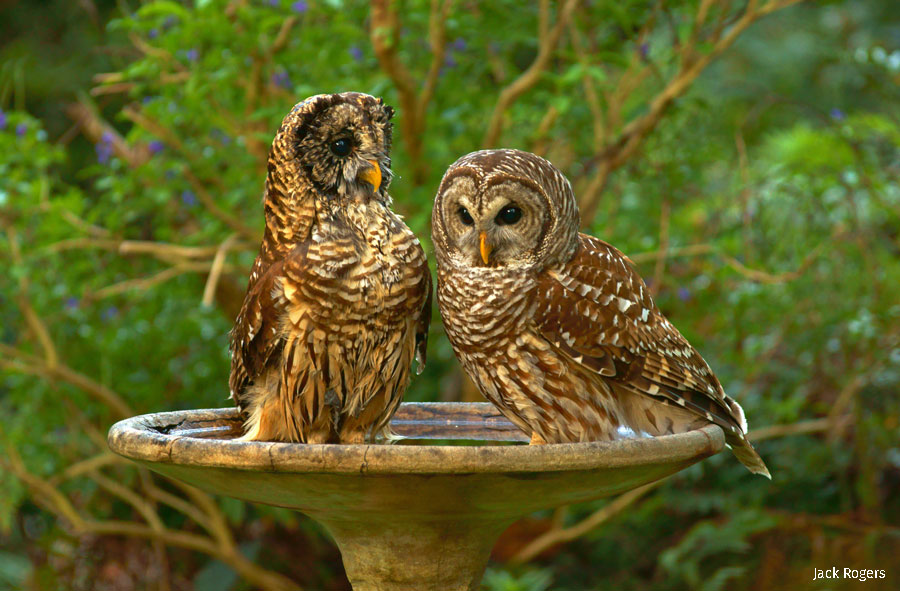February is one of the coldest months in the Northern hemisphere. By this time, food sources for wild birds have become scarce, buried underneath snow or wilted away until spring. Lower temperatures also mean birds need a lot more food just to maintain their body temperature. Providing food that is high in energy, like sunflower seeds and cracked corn, helps wild birds get through this challenging season. That’s what Feed the Birds Month is all about!
Over time, it’s become increasingly important to ensure that bird lovers like you are aware of best practices. The goal is to reduce potential harm to birds from feeders, primarily diseases and predators. Here are some tips to get you started.
Breaking Down Myths: Are Feeders Safe for Birds?
While feeding wildlife is generally discouraged, bird feeders are an exception—birds don’t become dependent on feeders. Instead, birds incorporate feeders into a route that also includes natural resources. As a result, removing a bird feeder wouldn’t have the same impact as it might on wildlife who can become dependent on a particular food source.
1. Placement
- Bird feeders should not be further than 3.5 meters from cover that provides a route of escape and protection to avoid predation.
- There should be an unobstructed view around bird feeders so that foraging birds can detect any predators in the area.
- Any cover that could conceal predators attempting to attack should not be near feeders.
- Feeders at lower levels should be surrounded by brush or fencing to preclude predator access.
- Bird feeders should be placed less than one metre or more than 10 metres away from buildings to minimize the risk of window collisions.
Curious about what kind of bird feeder would be best for your garden? Learn more about bird feeder types from our partners at Bird Friendly Peterborough →

2. FOOD AND FEEDER SELECTION AND MAINTENANCE
Use the right feeders the right way.
- Good bird feeders are made from plastic, steel or glass as they are easier to clean.
- Small feeders are best since they do not allow large numbers of birds to congregate, reducing contact rates, and they empty quickly, which prevents seeds from getting wet or spoiled.
- Feeders should have drainage holes to prevent water from accumulating, and they should also not have sharp points or edges that may cause injury.
- They should be covered to prevent seeds from getting wet, and they should allow birds to perch away from the food to avoid fecal contamination.
- Always wear gloves and wash your hands thoroughly after cleaning your feeders.
3. Feed the right food
- Provide only high-quality birdseed and avoid bargain brands that list “filler” seeds as main ingredients (ex. milo, red millet, oats, rice and wheat). Not only will these seeds be discarded by wild birds, but they will also absorb moisture—promoting spoilage and fungal growth while attracting rodents and other species.
- Different bird species prefer different seed types, try to provide a variety whenever possible. Sunflower seeds are the top choice among most birds. Suet is great, but only in the winter months since it goes rancid quickly in the heat. Safflower seeds, nyjer seeds and peanuts are other good choices that will attract a variety of species.
- Foods that have no nutritional value for birds or should not be fed to them include bread and chocolate.

4. Clean bird feeders and artificial water sources regularly
- They should be cleaned and disinfected twice a month while in use.
- Use a scrub brush and hot soapy water to clean debris and bird feces off the feeders.
- Special attention should be given to the perches and openings where the birds have to place their heads inside to get access to bird feed.
- After cleaning, they should be disinfected by immersion for two to three minutes in a solution of one part of liquid chlorine bleach and nine parts of warm water, then rinsed with clean water and allowed to air dry.
- Remove feeders if an outbreak is detected, and consult your CWHC Regional Centre to find out when the danger has passed.
5. And
- Use visual markers or other means to make your windows visible to birds. Learn more here.
- Keep domestic cats indoors or outdoors only on a leash or in an enclosure to prevent predation. Learn more here.
- Surveil the birds at your feeders: this is an important aspect of disease prevention in particular since the possibility of outbreaks is a constant threat. As well as keeping an eye on your backyard birds, listen for alerts from press outlets and management agencies on disease outbreaks.
- For more information on the signs and symptoms of some of the more common diseases, check out this report from CWHC.
Learn more about how Nature Canada is working towards making cities across the country bird friendly, visit our Bird Friendly City campaign and subscribe for updates to be the first to know about upcoming initiatives.
